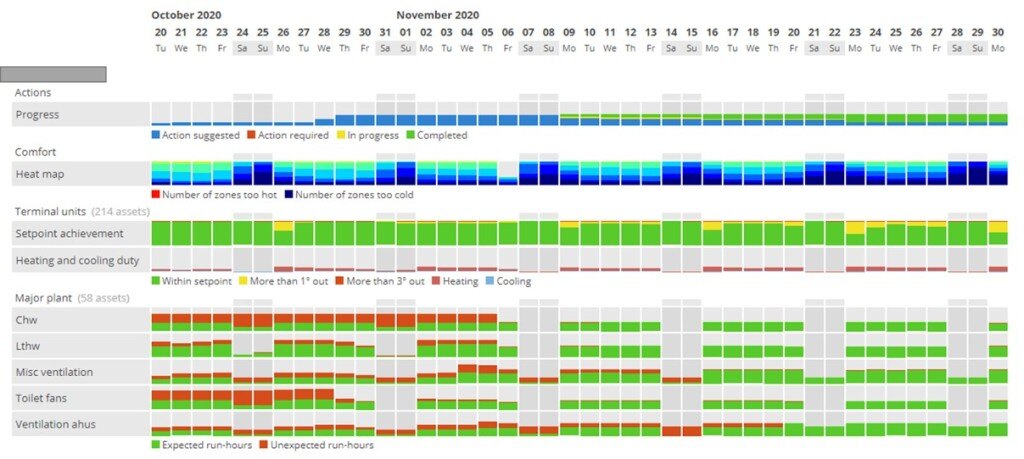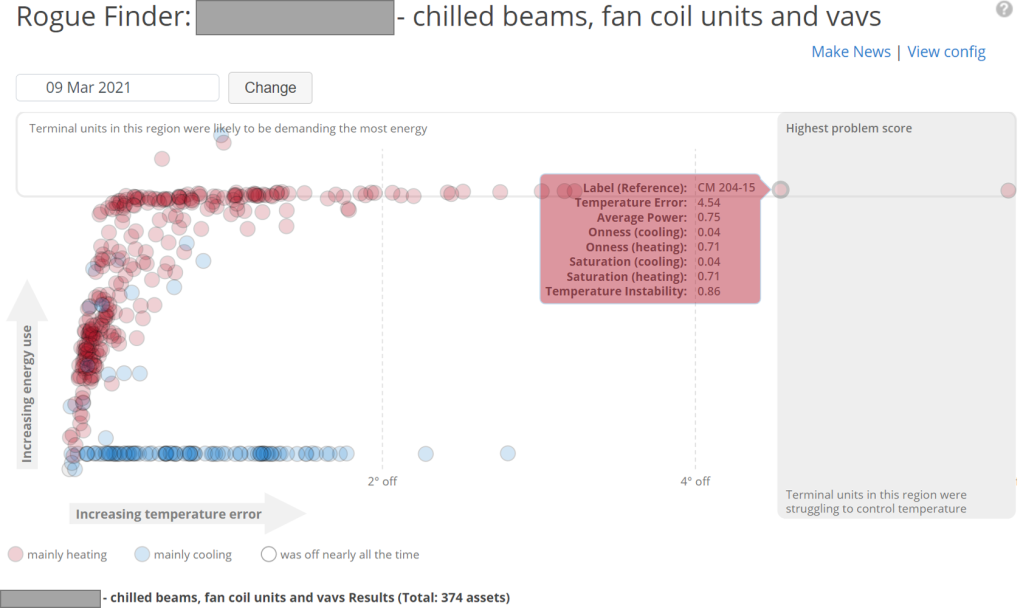NABERS: Improving operational efficiency
We recently tuned into the NABERS UK: transforming the energy performance of offices – old and new event hosted by ARUP. In light of this, we thought it would be useful to put together a short piece about some considerations covered during the discussion when addressing and ultimately improving the operational efficiency of your buildings.
You can now view the event here.
The relationship between ‘landlord’ major plant and ‘tenant’ HVAC.
In many multi-let office buildings a distinction is made between a tenant's demise and the rest of the building, known as the common parts. Whilst this distinction appears straightforward it actually becomes quite complex as far as building services are concerned. Even in instances where you can define ‘tenant equipment’ as that which is exclusively serving their demise, you cannot overlook the energy demand which that equipment is making on the landlord primary plant, the biggest single consumers of energy in any building
As an example, a multi-let office may have a single tenant who has 24/7 occupancy, and therefore demands 24/7 heating/cooling and ventilation from the landlord's major plant. This specific energy demand is rarely metered; thermal energy sub-meters are costly and disruptive to install, and frequently error prone due to poor installation, whilst ventilation is almost never sub-metered. Tenant demands on these major energy consumers are therefore attributed arbitrarily to ‘common part’ energy consumption.
Equally vacant units may end up consuming energy in order to maintain an ambient temperature to aid letting. Without regular checks, this operation may continue unnecessarily. Energy managers therefore cannot ignore the impact that different parts of the building have on what is termed ‘base building’ consumption. Even when certain parts of a building might be excluded from assessment, their energy demand ultimately is not. This will often present a quick win for those looking to improve a NABERS rating.

What can be done in existing buildings?
Most buildings generate operational data from installed control systems - and those which house newer equipment likely produce even more operational data than is realised. What both old and new buildings often have in common though is that this data is rarely utilised effectively during the operation of a building in order to keep it performing efficiently. So whilst emphasis is placed on new and efficient ways to construct and commission buildings, this alone doesn’t guarantee efficiency.
Accessing the existing operational data within your buildings is essential in order to closely monitor it’s efficiency. The phrase ‘continuous commissioning’ is beginning to be heard a lot more and aptly begins to hint at the level of analysis required in order to keep buildings performing optimally. In addition, the majority of this ‘commissioning’ can be as simple as changes to control strategy meaning that these are jobs which can be undertaken within the parameters of most maintenance contracts.

How will this impact the service charge?
Whilst there is always a drive to keep service charge levels as low as possible there is also an understanding that initiatives such as ‘continuous commissioning’ challenge this, but conversely, there is also an opportunity to reduce elements of expenditure. There is a false dichotomy between tenant satisfaction and energy consumption, especially where HVAC is concerned. Indeed, service charge expenditure may already be inflated due to high energy consumption and excessive ad hoc maintenance call outs.
Utilising effective means to reduce energy consumption such as the digitalisation of HVAC ultimately enables a targeted, condition based maintenance approach. So whilst there is a cost to undertaking this, the reduction in energy consumption provides a near immediate return on investment. Similarly the ability to identify and remotely diagnose issues in a building enables a more proactive approach to maintenance. This means that performance anomalies can be resolved during regular maintenance, before they become critical and require a call out. Equally in cases where an engineer has stewardship over multiple buildings, maintenance can be prioritised to the assets most in need of attention.

We look forward to sharing more tips and supporting our clients in achieving their NABERS ratings. If you're interested in how you can improve operational efficiency then visit our website: https://www.demandlogic.co.uk/